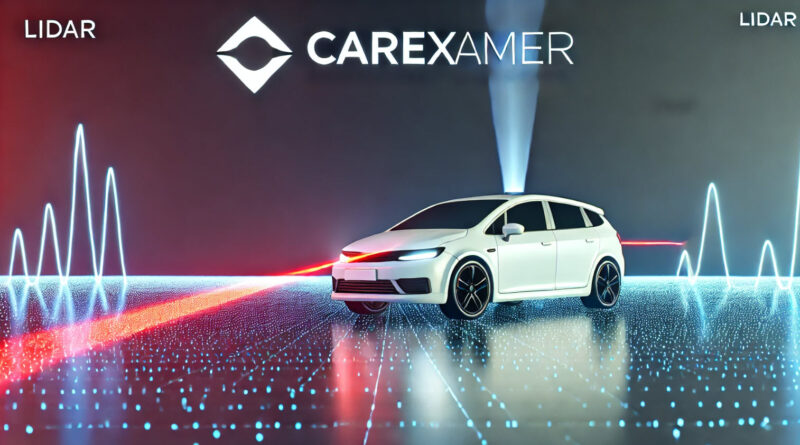What is LiDAR? Here’s What You Need to Know
Let’s dive into what is LiDAR, how it works, and why it’s becoming such an important tool. LiDAR, which stands for Light Detection and Ranging, is a cutting-edge technology that uses lasers to measure distances and create detailed 3D maps of the environment. While you may have heard of it in connection with self-driving cars, it’s actually used in many industries.
What Exactly is LiDAR?
In simple terms, it uses light—specifically, laser pulses—to measure the distance between the sensor and an object. By firing thousands of laser pulses per second and measuring how long it takes for them to bounce back, LiDAR can create a highly accurate 3D model of the surrounding area. This makes it incredibly useful for anything that requires precise mapping or detection of objects.
How Does LiDAR Work?
System works by sending out laser pulses from a sensor and recording how long it takes for each pulse to hit an object and return. Since light travels at a constant speed, the time it takes for the pulse to come back is converted into a distance measurement. Multiply that by thousands of pulses per second, and you get a “point cloud”—essentially, a 3D image of your environment.
Here’s a quick breakdown of the process:
- Laser pulses are emitted: The device sends out a rapid stream of laser pulses.
- Light reflects off objects: The pulses hit things like buildings, trees, or the ground and bounce back to the sensor.
- Distance is calculated: The time it takes for the light to return is converted into a distance measurement.
- 3D map is created: All the distance points are combined to create a 3D representation of the area.
Different Types of LiDAR
System can be used in several ways depending on the application. The two main types are:
1. Airborne
Mounted on airplanes or drones, airborne LiDAR is used to map large areas from the sky. This type is great for creating topographic maps or for use in forestry and urban planning.
2. Terrestrial
Terrestrial is either mounted on a vehicle or placed on a tripod on the ground. It’s used for more localized mapping, like road surveys, building inspections, or self-driving car navigation.
How Is LiDAR Used?
Ability to create precise 3D models makes it incredibly versatile. Here are some of the most common uses:
1. Autonomous Vehicles
LiDAR is one of the key technologies used in self-driving cars. It helps the car “see” the world around it by detecting objects, pedestrians, and obstacles, allowing the car to safely navigate the streets.
2. Mapping and Surveying
LiDAR is perfect for creating detailed maps of the earth’s surface. It’s especially useful in areas that are difficult to access, like forests, mountains, or remote landscapes.
3. Environmental Monitoring
Scientists use system to monitor environmental changes, like deforestation, soil erosion, or the impact of natural disasters. Can even measure changes in forest canopy height over time.
4. Archaeology
Believe it or not, system has helped archaeologists discover ancient ruins hidden beneath thick forest canopies. It can penetrate vegetation, allowing researchers to map buried structures without disturbing the site.
5. Construction and Engineering
In construction, LiDAR is used to ensure accuracy during site planning and building. Engineers can create precise blueprints and monitor construction progress with 3D models generated by this device.
Benefits of Using LiDAR
LiDAR has several advantages over other technologies, like cameras or radar, particularly when it comes to accuracy and versatility.
1. Extremely Accurate
LiDAR offers incredibly detailed measurements, which makes it ideal for creating precise 3D models.
2. Works Day and Night
Since LiDAR uses lasers, it doesn’t rely on sunlight. It works just as well in the dark, unlike traditional cameras.
3. Rapid Data Collection
LiDAR collects vast amounts of data quickly, making it perfect for large-scale surveys or mapping projects.
4. Can See Through Vegetation
LiDAR’s ability to penetrate light vegetation makes it invaluable for mapping areas covered by trees or foliage.
Downsides of LiDAR
Like any technology, LiDAR has its drawbacks:
1. It’s Expensive (costs are getting cheaper)
LiDAR systems can be costly, especially high-resolution models. The hardware, software, and data analysis all add up.
2. Weather Can Be a Problem
Heavy rain, fog, and snow can interfere with LiDAR’s laser pulses, reducing its accuracy.
3. Limited Range
LiDAR doesn’t work as well over long distances compared to radar, which is better suited for long-range detection.
The Future of LiDAR
As LiDAR technology becomes more advanced and affordable, its use is expected to grow. In the automotive industry, LiDAR is crucial for developing fully autonomous vehicles. As the technology improves, it’s also likely to become more common in agriculture, environmental monitoring, and construction.
Conclusion
LiDAR is transforming industries with its ability to map and detect objects with extreme precision. From helping self-driving cars navigate the road to uncovering hidden archaeological sites, the applications of LiDAR are vast. As this technology evolves, we’ll likely see even more innovative uses in the near future.
Buying a used VW. Buying used vauxhall, BMW, Jaguar, Ford, Volvo, Range rover, Bentley, Aston Martin, Porsche, Ferrari, Lamborghini, Maserati, Hyundai, Tesla, Honda, Pagani

